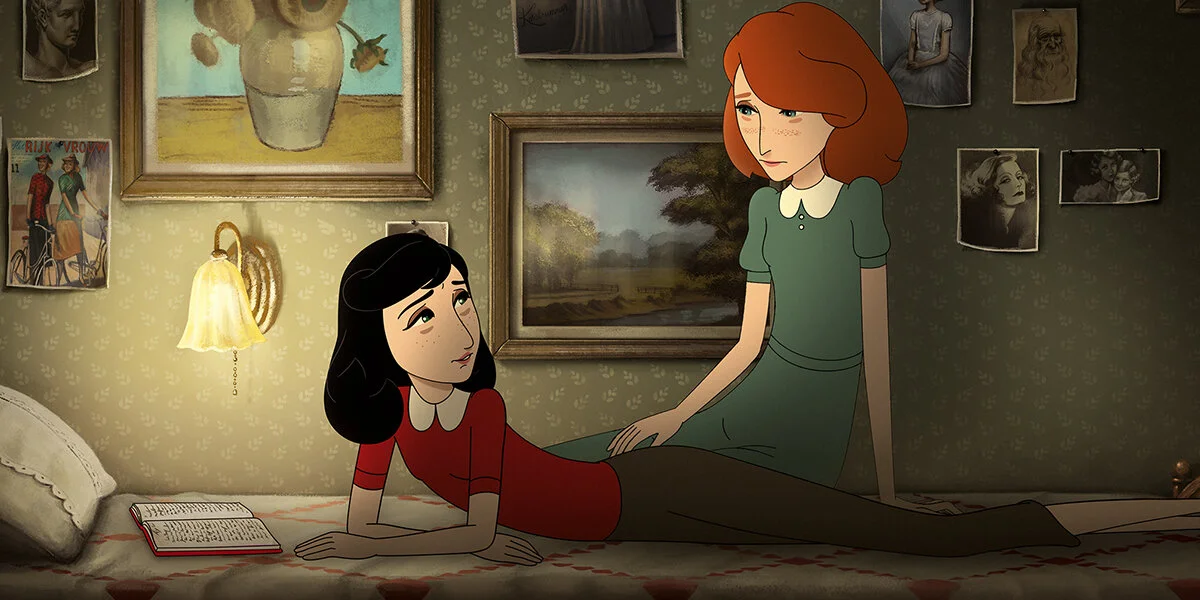Review by Zach Dennis
How do we properly teach history so that we not only know what happened but fully understand what led up to it?
Director Ari Folman was approached to direct Where is Anne Frank? by the Anne Frank Fonds Basel eight years ago in an attempt to re-purpose the story of the Frank family and the Holocaust in a way to better engage with modern audiences. Folman, known for his harrowing use of animation to reenact history in Waltz with Bashir, said he wanted to provide Holocaust education in a way that was more conducive to how young people were engaging with stories.
“To truly imagine what happened is just beyond our reach,” he said. “I grew up in a family of Holocaust survivors and have heard the most horrifying stories a child can ever hear. But our minds are incapable of creating a visual connection to these stories and cannot fully grasp what happened. I would call this a task that is overwhelming to all of us. I therefore created an allegory to relate the story, using the tools animation and drawing provide us with to create imaginary worlds.”
In a recent survey of millennials and Gen-Z participants by the Conference on Jewish Material Claims Against Germany, researchers found that 63 percent of those surveyed did not know 6 million Jews were murdered in the Holocaust. Over half of those thought the toll was under 2 million.
Those stats alone would argue enough to commission a movie like Where is Anne Frank?, which not only tells the story of Anne and her family but also brings the audience into the present day to see how people today engage with the history of the Holocaust. Unfortunately, many do not use the story to construct a better world, but rather use the notoriety of Anne to place her name on buildings, schools, bridges and more around Amsterdam as a way to pay respect without doing any other work.
That’s a real problem, and one that has less to do with the results of the survey on Holocaust awareness and more to do with how we as humans process tragedy. Look at recent remembrances of 9/11 in the United States, which pay respects to those who lost their lives that day and in the years of wars afterwards but lack any sort of introspection on how we might prevent similar tragedies from happening in the future. Let’s not even pretend to think we’ll give the same reverence to those lost in the COVID-19 pandemic if we ever get to a point of some herd immunity.
On the surface, it would seem like Where is Anne Frank? is the perfect way to circumvent a lot of this lack of education, but Folman’s film also suffers from presenting the information on the surface but not providing enough context to understand how we got there.
One glaringly poor decision was to present the Nazis as faceless phantoms, as the film consistently evokes Greek mythology and Anne’s fascination with it – they even go as far as to have a scene where Kitty, Anne’s imaginary friend from her diary and protagonist from this film, along with Anne riding alongside figures of Greek mythology and Clark Gable in battle against the Nazis.
Presenting the Nazi forces as phantoms rather than real people reinforces this message that Nazism was a plague from history rather than a still-present ideological problem. If we’re supposed to take away that Nazis were terrible people doing terrible things, that becomes impossible if they’re presented as abstract evil rather than something real, defined and could be anywhere around you.
That becomes more of a problem as the film begins to relate Anne’s story with that of modern day refugees. The villains in that story – the police and Netherlands officials – are given more personality, showing that their institutions that can be reformed rather than faceless phantoms bringing evil.
Holocaust education is imperative, and attempts such as Where is Anne Frank? are needed as we try to explain history to younger audiences. But we also need to reflect and be introspective on how we’re doing that, and whether or not we’re saying that this was the past and we shouldn’t repeat it; when the message should be, this is how we got here and this is what we have to do to avoid it again.


